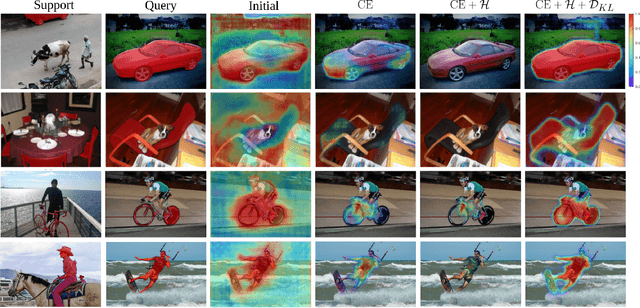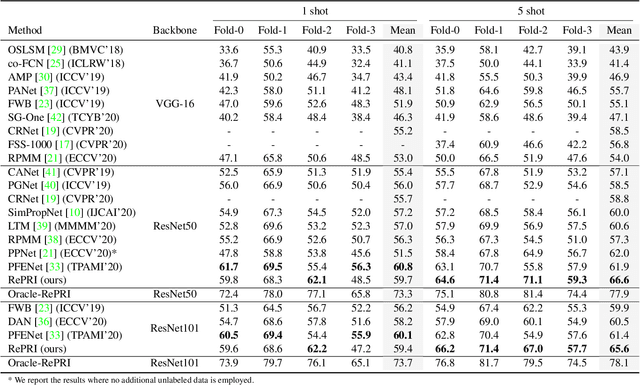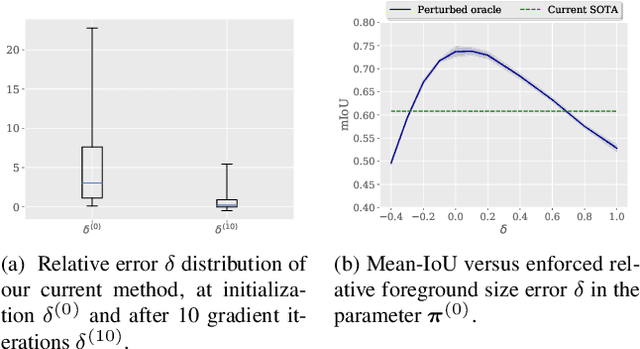Few-Shot Segmentation Without Meta-Learning: A Good Transductive Inference Is All You Need?
Paper and Code
Dec 11, 2020



Few-shot segmentation has recently attracted substantial interest, with the popular meta-learning paradigm widely dominating the literature. We show that the way inference is performed for a given few-shot segmentation task has a substantial effect on performances, an aspect that has been overlooked in the literature. We introduce a transductive inference, which leverages the statistics of the unlabeled pixels of a task by optimizing a new loss containing three complementary terms: (i) a standard cross-entropy on the labeled pixels; (ii) the entropy of posteriors on the unlabeled query pixels; and (iii) a global KL-divergence regularizer based on the proportion of the predicted foreground region. Our inference uses a simple linear classifier of the extracted features, has a computational load comparable to inductive inference and can be used on top of any base training. Using standard cross-entropy training on the base classes, our inference yields highly competitive performances on well-known few-shot segmentation benchmarks. On PASCAL-5i, it brings about 5% improvement over the best performing state-of-the-art method in the 5-shot scenario, while being on par in the 1-shot setting. Even more surprisingly, this gap widens as the number of support samples increases, reaching up to 6% in the 10-shot scenario. Furthermore, we introduce a more realistic setting with domain shift, where the base and novel classes are drawn from different datasets. In this setting, we found that our method achieves the best performances.
 Add to Chrome
Add to Chrome Add to Firefox
Add to Firefox Add to Edge
Add to Edge